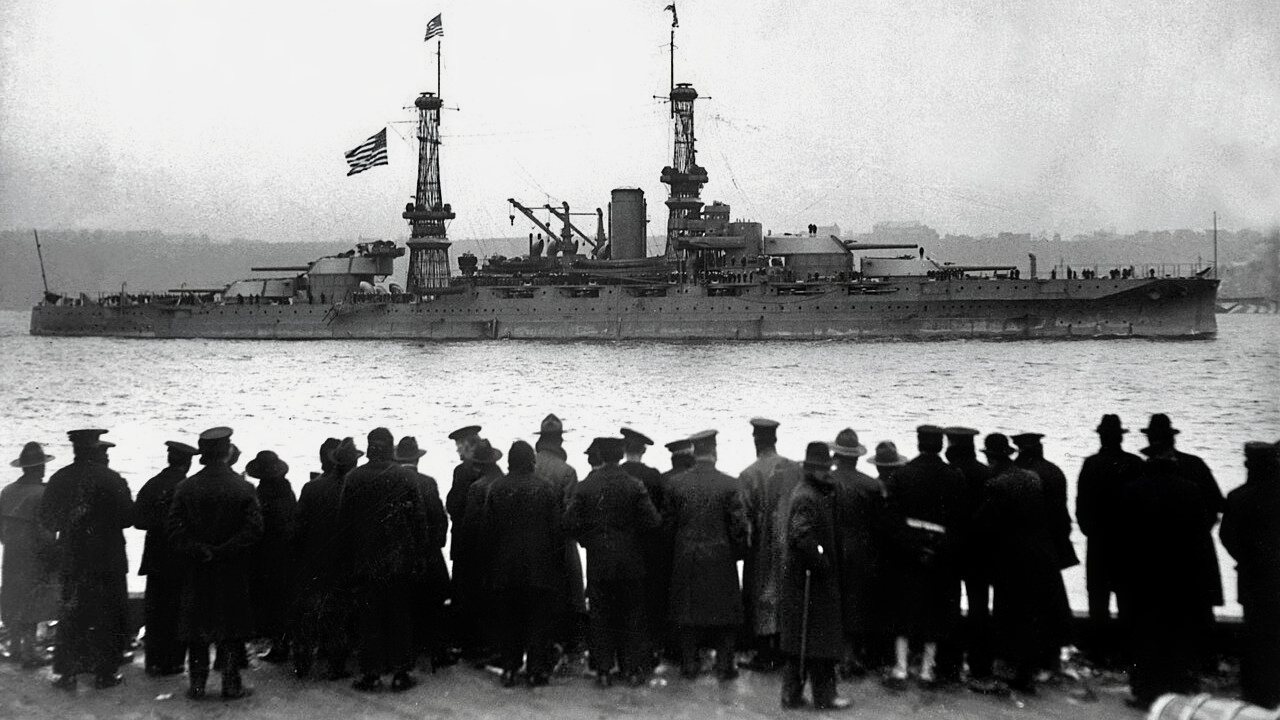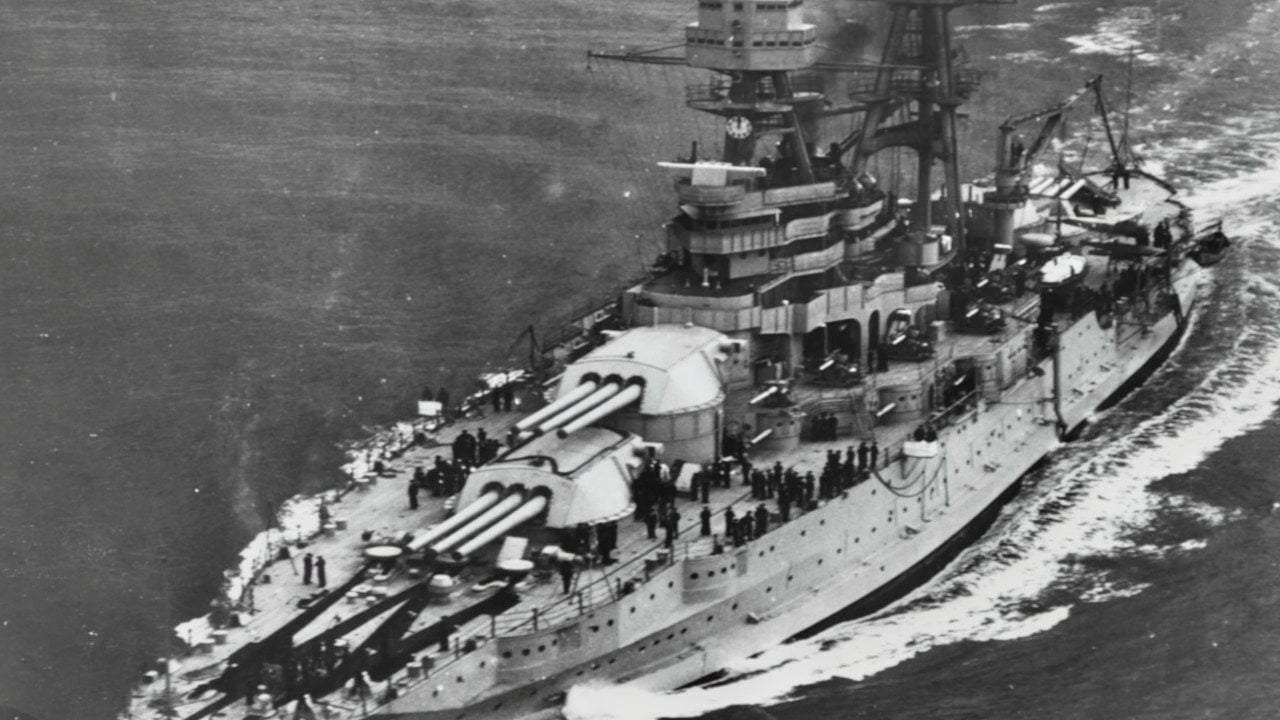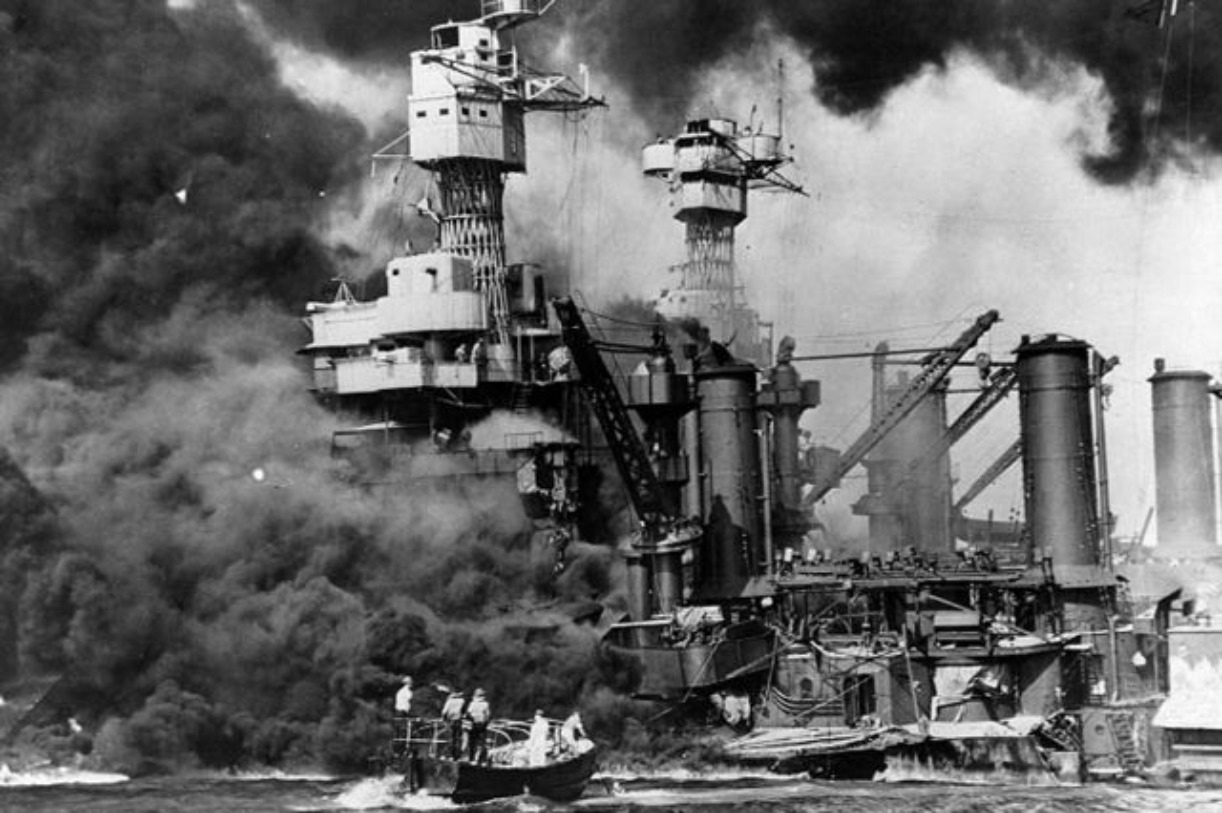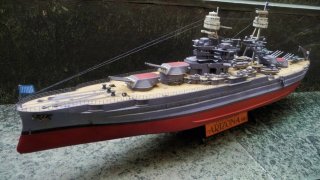USS Arizona: The Most Famous of All Battleships (For All the Wrong Reasons)
The USS Arizona, a Pennsylvania-class battleship, symbolized U.S. naval might before World War II but tragically became a reminder of the dangers of underestimating potential threats.
Summary and Key Points: The USS Arizona, a Pennsylvania-class battleship, symbolized U.S. naval might before World War II but tragically became a reminder of the dangers of underestimating potential threats.

-Part of the "Standard-Type" battleship design, Arizona featured an "all-or-nothing" armor scheme, focusing protection on vital areas like ammunition magazines and propulsion systems.
-Despite these advancements, Arizona was vulnerable to aerial bombs, a weakness exploited during the Japanese attack on Pearl Harbor on December 7, 1941. Hit by several bombs, one of which detonated her forward ammunition magazines, the ship was destroyed, killing 1,177 crew members.
The Tragedy of the USS Arizona
The battleship craze that dominated the minds of U.S. Navy planners throughout the first part of the 20th century led to the creation of the Standard-Type battleship. These were 12 battleships built across five different classes using similar standardization practices to ensure the boats were interoperable and could effectively plug-and-play into lines of attack while at sea. The second class of the Standard-Type battleship was the Pennsylvania class.
America’s Pennsylvania-class battleship (or super-dreadnought, because they were considered slightly smaller than other types of battleships), consisted of only two warships, USS Pennsylvania and USS Arizona. Of course, some readers may recognize USS Arizona as one of the battleships lost at Pearl Harbor when the Japanese launched their surprise attack on December 7, 1941.
Arizona’s “All or Nothing” Armor
Arizona was designed with an “all-or-nothing” armor scheme.
Craig Ryan of Naval Historia describes this approach as having “revolutionized battleship design in the early 20th century by concentrating armor around the most vital areas, such as ammunition magazines and propulsion systems, while leaving less critical areas protected.”
In Ryan’s assessment, “This approach significantly enhanced battleship survivability in combat, enabling these ships to sustain damage yet continue fighting effectively.” In fact, Ryan explains that, “the ‘all or nothing’ concept influenced naval architecture worldwide, setting new standards for naval engineering and tactics in the era of dreadnought battleships.”

America’s Pennsylvania-class battleships were the beneficiaries of hard lessons learned fighting the First World War. Before the Great War erupted, the world’s advanced navies preferred distributed armor for their battleships, “which entailed spreading armor over as much of the ship’s surface as possible.”
While this worked for a time, technology and tactics rapidly evolved during WWI. More powerful guns were developed and used against battleships with distributed armor. The larger shells fired from these more powerful guns could easily bust through the relatively thin armor on most battleships. They “could not provide sufficient protection against the enemy shells of enemy battleships.”
Sadly, Arizona was not well protected from bombs dropped by planes above.
What Arizona Could Do
In terms of Arizona’s capabilities, she had a displacement of 29,626 tons. Her speed was just shy of 25 miles per hour, and she came fully loaded with an impressive suite of weapons.
Arizona’s arsenal included twelve 14-inch, .45-caliber guns, twenty-two 5-inch, 51-caliber guns, four 3-inch, .50-caliber anti-aircraft guns, and two 21-inch torpedo tubes.
She saw little action during WWI. In the interwar years, Arizona underwent several modernizations. Among the upgrades was a new fire control system.
Arizona Participated in a Fleet Exercise That Predicted Pearl Harbor…
USS Arizona became the symbol of U.S. Naval might in the Pacific in the run-up to America’s involvement in WWII. About 18 months before the war’s outbreak, Arizona participated in the Fleet Problem XXI exercises of April and May 1940. These fleet exercises actually predicted the exact method of attack that the Japanese would employ against the Pacific Fleet on December 7, 1941.
Indeed, when President Franklin D. Roosevelt ordered the Pacific Fleet to be moved from San Francisco to Hawaii as a show of force to the increasingly belligerent Japanese Empire, then-commander of the Pacific Fleet, U.S. Navy Admiral James O. Richardson, made his strong objections known to FDR, citing the Fleet Problem XXI exercises and the fact that Tokyo would view the American move to Hawaii as provocative.
The Fall of USS Arizona
Arizona and many other battlewagons moored in the infamous “Battleship Row” in Pearl Harbor would suffer the consequences of FDR’s short-sightedness and of the Navy’s refusal to accept the findings of its own fleet exercises from the year before the Pearl Harbor attack.
Arizona was hit with several bombs dropped from overhead Japanese warplanes. Those bombs penetrated the upper decks of the ship, detonating in its forward ammunition magazines and causing a cascading, larger explosion that obliterated the battleship and killed many of its 1,177 crewmembers.
After that horrific attack, USS Arizona became a symbol far different from what her designers had intended. She symbolized what happens when America ignores warnings, and she became an emblem of the sacrifices of brave sailors.

Today, Arizona remains where she sank all those decades ago. A floating memorial was constructed over the sunken warship, so that onlookers of each new generation can learn about the trials and tribulations of Arizona on that fateful day.
Author Experience and Expertise: Brandon J. Weichert
Brandon J. Weichert, a National Interest national security analyst, is a former Congressional staffer and geopolitical analyst who is a contributor at The Washington Times, the Asia Times, and The-Pipeline. He is the author of Winning Space: How America Remains a Superpower, Biohacked: China’s Race to Control Life, and The Shadow War: Iran’s Quest for Supremacy. His next book, A Disaster of Our Own Making: How the West Lost Ukraine, is due October 22 from Encounter Books. Weichert can be followed via Twitter @WeTheBrandon.
All images are Creative Commons or Shutterstock. All photos are of various submarine styles.
From the Vault
Russia Freaked Out: Why the U.S. Navy 'Unretired' the Iowa-Class Battleships
Battleship vs. Battlecruiser: Iowa-Class vs. Russia's Kirov-Class (Who Wins?)


